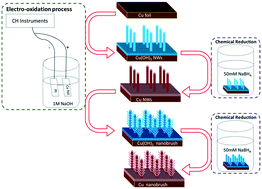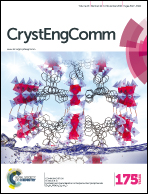Room-temperature fabrication of Cu nanobrushes as an effective surface-enhanced Raman scattering substrate
Abstract
A facile route to manufacture an active surface-enhanced Raman-scattering (SERS) substrate based on brush-like Cu nanostructures directly grown on a Cu foil at 23 °C was systematically investigated. A hierarchical Cu nanobrush substrate was fabricated in two cycles of electro-oxidation and chemical reduction in sequence; Cu(OH)2 nanowires (NW) were formed on electro-oxidation, and converted on chemical reduction to Cu NW. Two cycles of this process achieved a brush-like Cu nanostructure; its structure, morphology and composition were examined by XRD, SEM, HRTEM and XPS, respectively. With 4-mercaptobenzoic acid (4-MBA) and chlorothalonil as probe molecules, the SERS experiments showed that the brush-like Cu nanostructures exhibit excellent detection performance, which could serve as effective SERS substrates for ultrasensitive detection. This novel hierarchical SERS substrate shows satisfactory reproducibility and a linear dependence between the analyte concentration and intensity, revealing the advantage of this method for easily scaled production.


 Please wait while we load your content...
Please wait while we load your content...